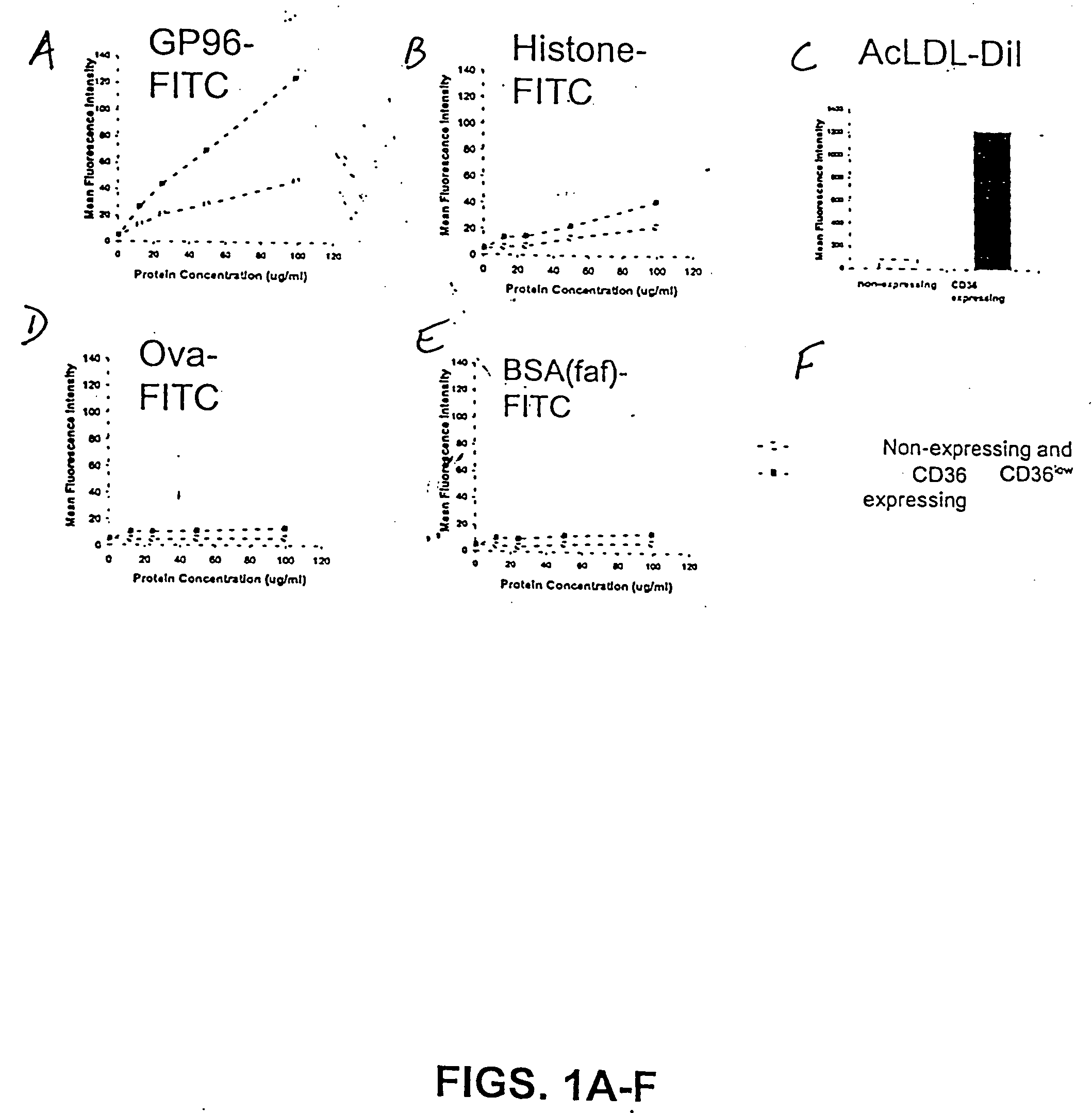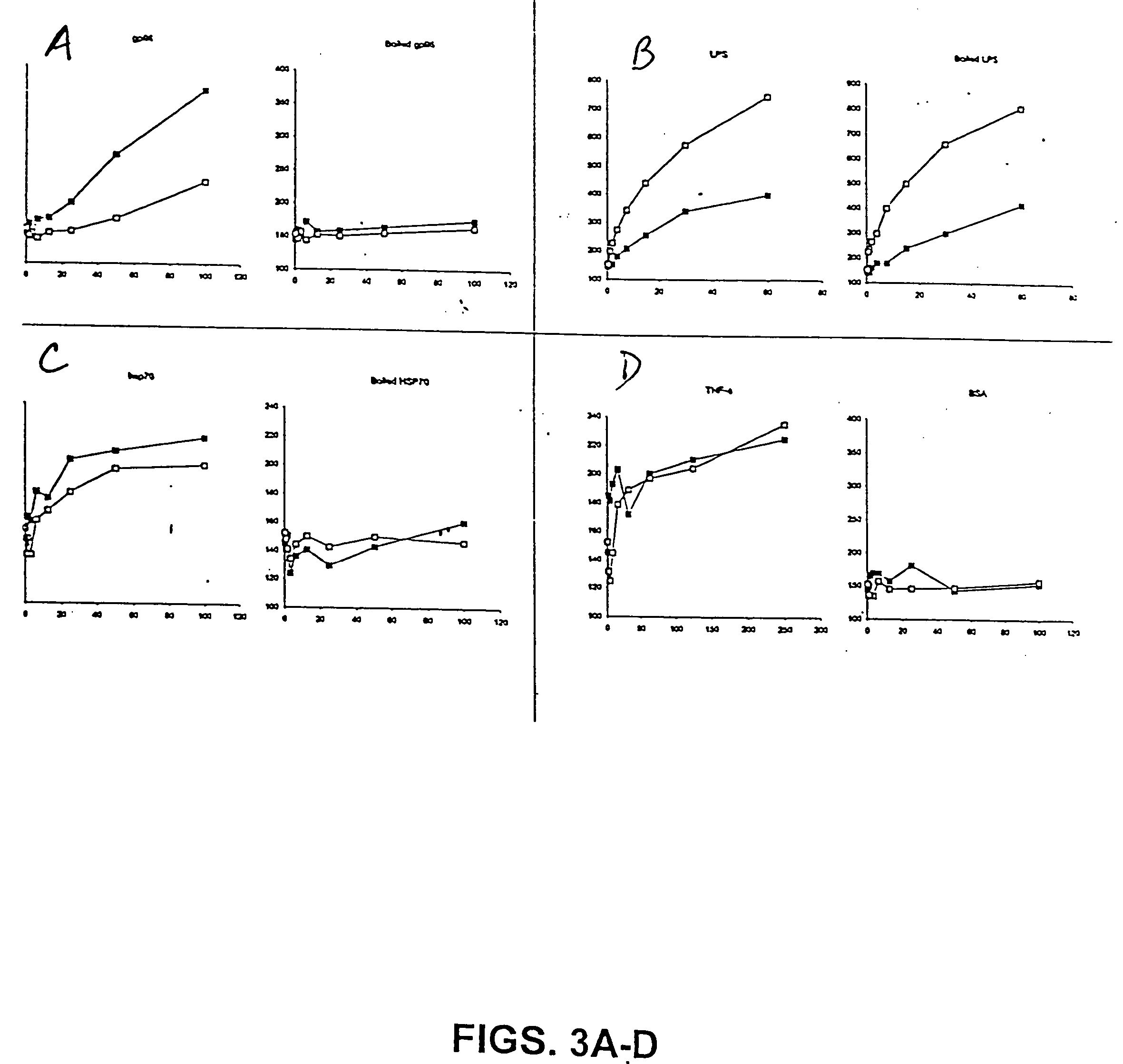Cd36 as a heat shock protein receptor and uses thereof
a technology of cd36 and heat shock protein, which is applied in the field of cd36 as a heat shock protein receptor, can solve the problems that the process by which exogenously introduced gp96-peptide complexes elicit the antigen-specific cd8+ t cell response is not fully understood, and achieves the effects of increasing the immunopotency of cancer cells, and increasing the immune respons
- Summary
- Abstract
- Description
- Claims
- Application Information
AI Technical Summary
Benefits of technology
Problems solved by technology
Method used
Image
Examples
Embodiment Construction
[0058] The present invention relates to compositions and methods for the use of CD36 as a heat shock protein ("HSP") receptor. In particular, the present invention provides compositions comprising isolated CD36-ligand complexes, e.g., CD36-HSP complexes, including isolated and / or recombinant cells, and antibodies, molecules and compounds that modulate the interaction of CD36 with a CD36 ligand, such as HSP. The invention further encompasses methods for the use of CD36 as a heat shock protein receptor, including screening assays to identify compounds that modulate the interaction of CD36 with an HSP, or other CD36 ligand, and methods for the use of these molecules and complexes for the diagnosis and treatment of immune disorders, proliferative disorders, and infectious diseases.
[0059] The term "CD36 ligand" as used herein, refers to a molecule capable of binding to CD36. Such CD36 ligands include as well as known ligands, such as, but not limited to, lipoprotein complexes, thrombospo...
PUM
 Login to View More
Login to View More Abstract
Description
Claims
Application Information
 Login to View More
Login to View More - R&D
- Intellectual Property
- Life Sciences
- Materials
- Tech Scout
- Unparalleled Data Quality
- Higher Quality Content
- 60% Fewer Hallucinations
Browse by: Latest US Patents, China's latest patents, Technical Efficacy Thesaurus, Application Domain, Technology Topic, Popular Technical Reports.
© 2025 PatSnap. All rights reserved.Legal|Privacy policy|Modern Slavery Act Transparency Statement|Sitemap|About US| Contact US: help@patsnap.com



